Most Popular Packages
Free Up Just Enough Storage with Diskonaut and Flox
Steve Swoyer | 11 February 2025
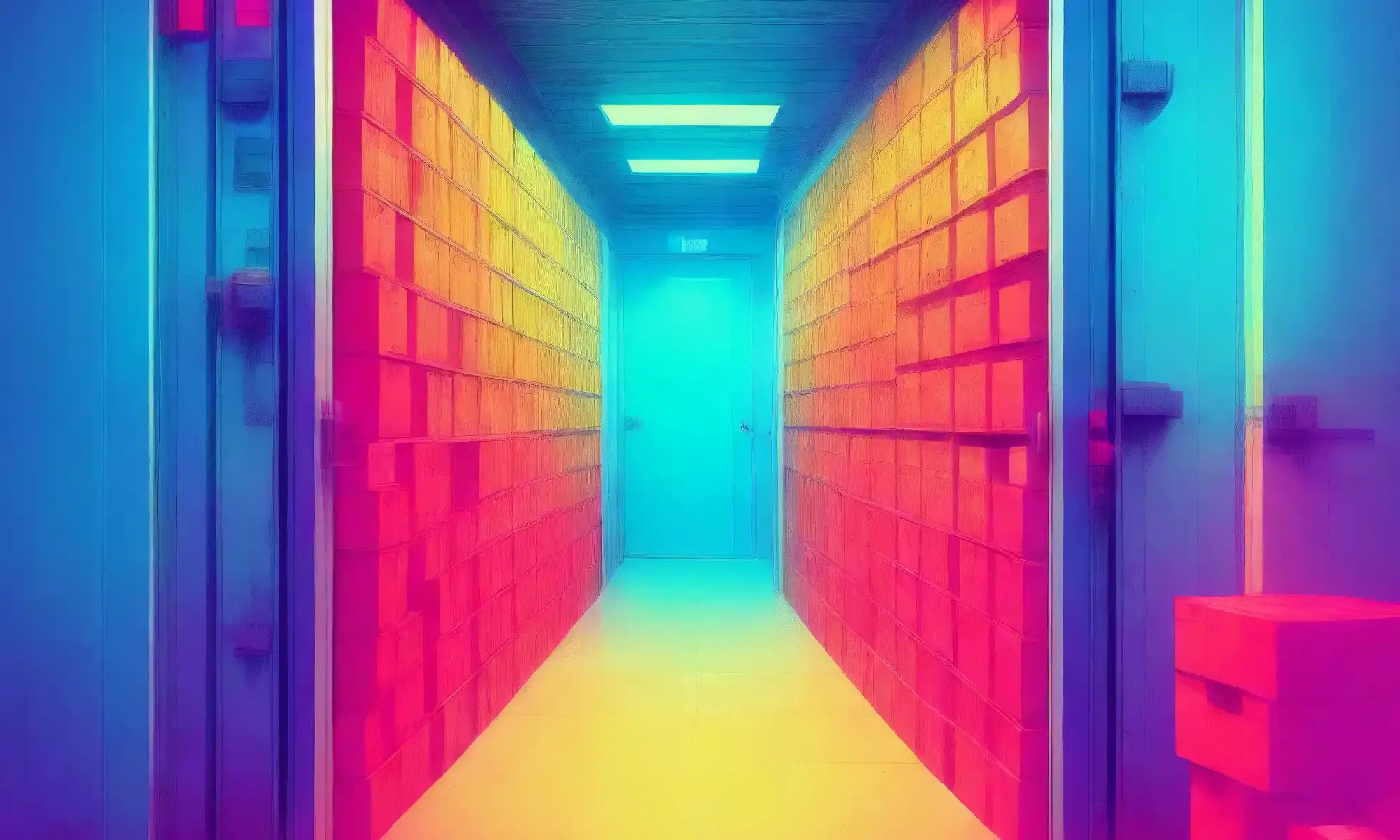
Some of us have a weakness for TUI disk tools.
Whether it’s classic TUI file managers, like MidnightCommander and Ranger, or disk-space management tools like ncdu, duf, dust, gdu, or disk navigation and search tools like broot and fzf—we just can’t get enough. If you’re one of us, raise your hand. Don’t be shy.
That’s a great setup for this featured package entry.
It’s diskonaut, a TUI tool for visualizing disk usage as an interactive treemap, so it's easier to identify large files and folders. Diskonaut is reminiscent of GUI-based tools like GrandPerspective for macOS—or the earlier KDirStat for Linux—but runs in a TUI, not a GUI. (A modern alternative to KDirStat is QdirStat, which we might could cover at some point for FPF.)
If you find yourself struggling with over-sized project directories, orphaned local LLMs, little-used games, and other disk hogs, diskonaut could be a lifesaver.
Getting It
I’m going to assume you’ve already downloaded and installed Flox.
You can get diskonaut in one of two ways:
- Initialize a Flox environment in a new project folder and install
diskonautfrom the Flox Catalog; - Pull or remotely activate our
a-perfect-shellenvironment from FloxHub.
Let’s briefly cover both methods.
With the first, you’d initialize a new Flox environment by cd-ing into a project directory and running flox init. This done, you’d run flox install diskonaut, followed by flox activate to start your environment.
With the second, you have two options:
- Running
flox pull flox/a-perfect-shellcreates a locked local clone of this environment in a new project directory. Runningflox pull --copy flox/a-perfect-shellcreates an unlocked local clone you can modify. - Typing
flox activate -r flox/a-perfect-shellrunsdiskonautin an ephemeral Flox subshell. Exiting this subshell destroys the environment. You can remotely activate a FloxHub environment in any directory.
When you install diskonaut manually or pull a-perfect-shell from FloxHub, you need to run flox activate to use it. With remote activation and flox activate -r, you start out in a live subshell session.
Using It
Let’s say you’ve got—and I’m just spit-balling here—2 TB of local storage. And let’s say some obscene proportion of said storage—spitballing again, how about 99.8%?—is usually maxed out.
Downloading a new LLM, installing a new game, pulling a container from DockerHub—these and other activities always involve finding and deleting (newly) unloved files that are hogging precious disk space.
Otherwise, you’ll get this error. You've come to dread this error:
No space left on deviceWhenever you see this message, you fire up diskonaut, usually starting in your home directory:
cd ~ && diskonautIt takes a moment for diskonaut to scan your home directory and its subfolders. Once it’s finished you see:
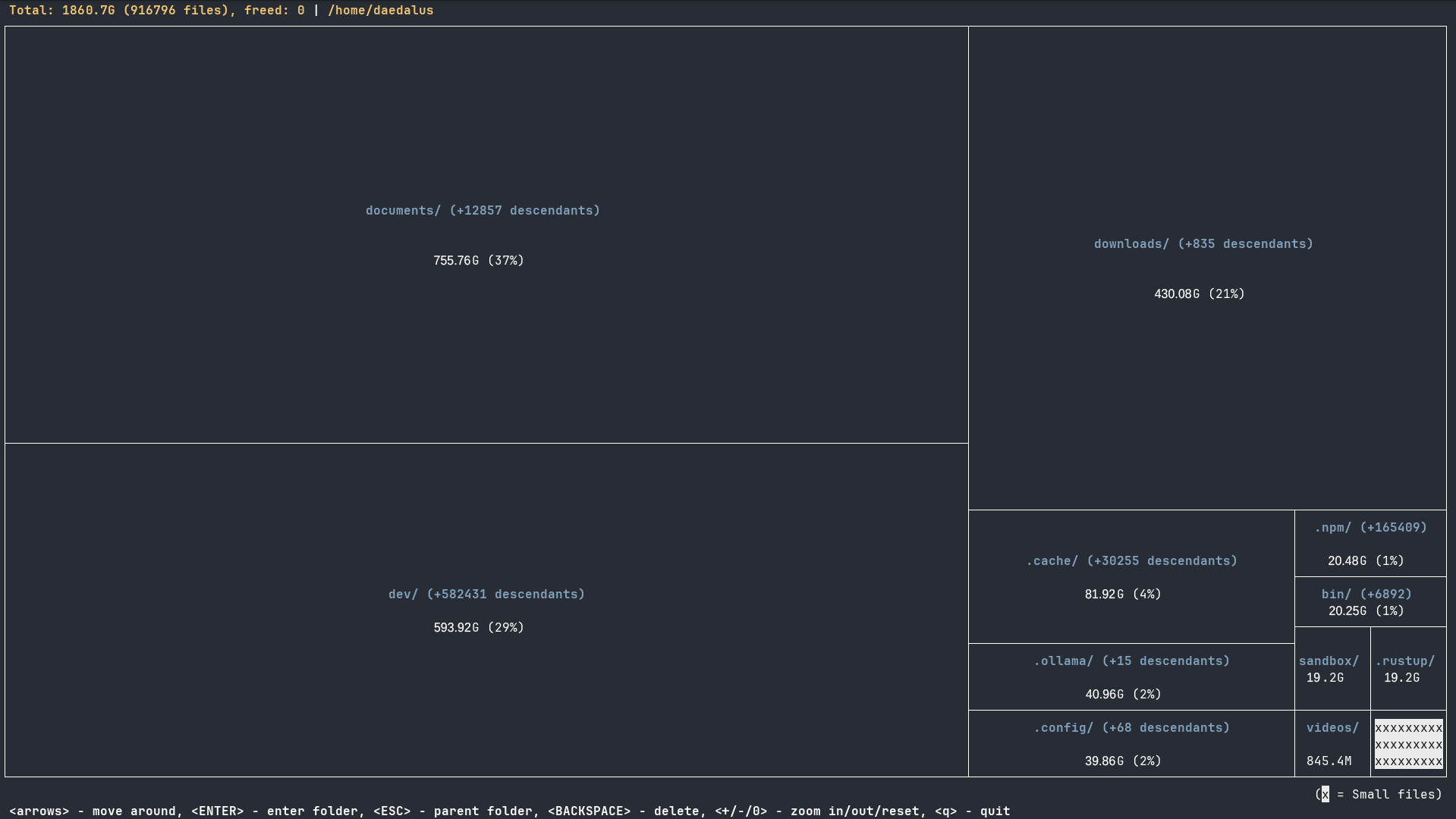
You press the - or + keys to zoom in or out of your view—i.e., to show more or fewer directories in the disk-tree view.
You use the ARROW keys to position the cursor on panes in the GUI to highlight them.
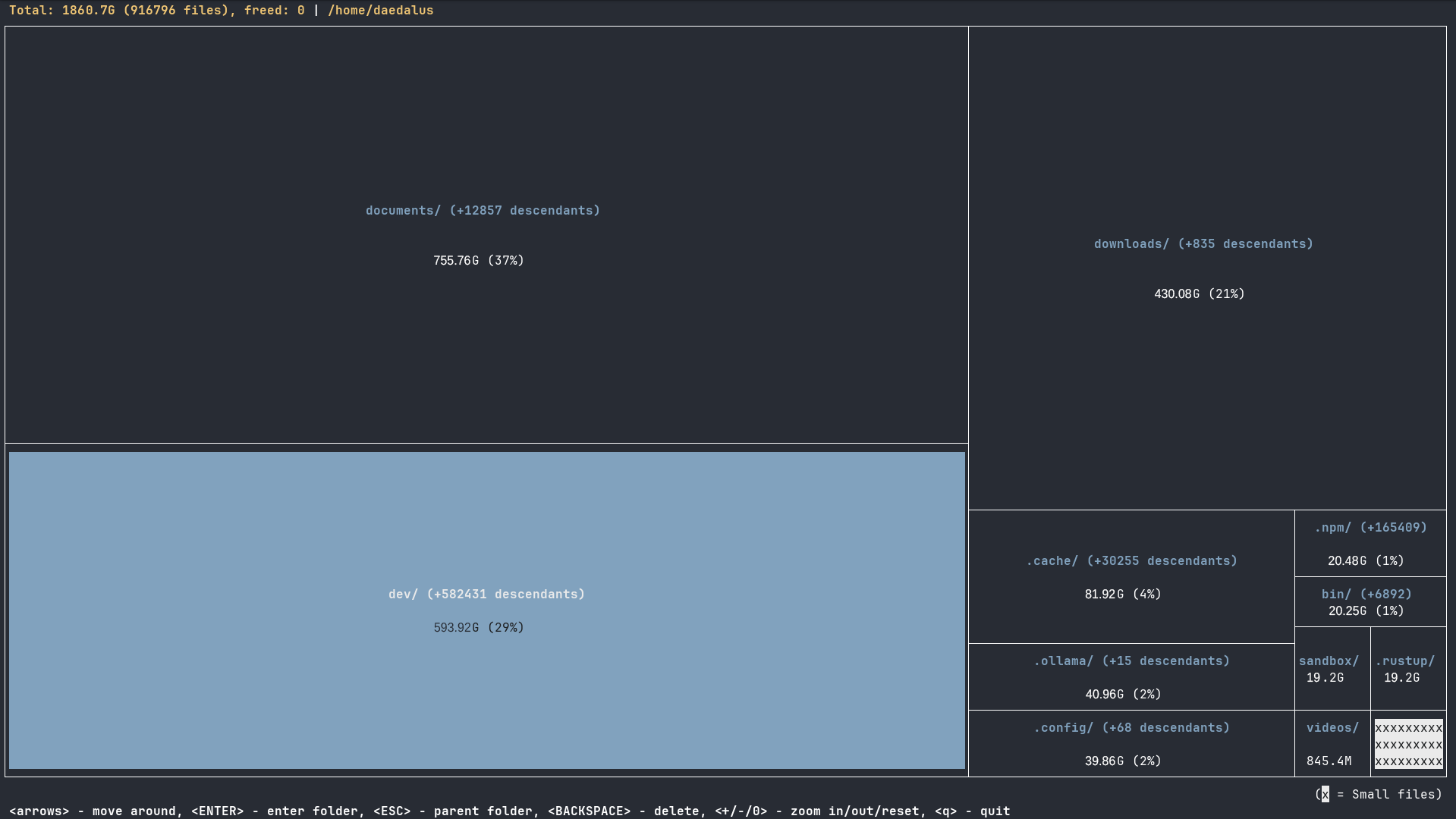
And pressing ENTER descends into that directory.
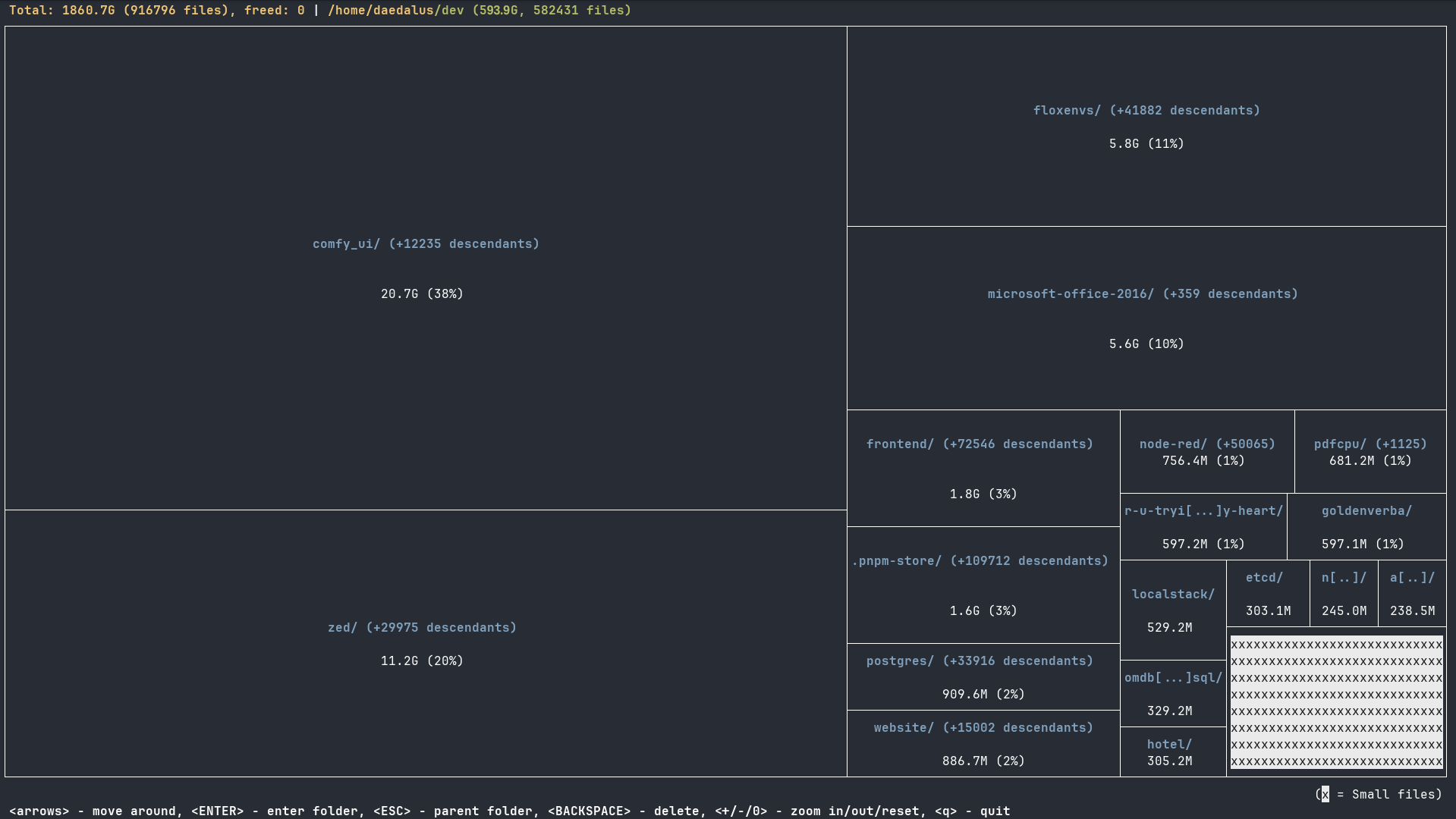
Descending into the comfy_ui directory reveals that (not surprisingly) models is the largest dir.
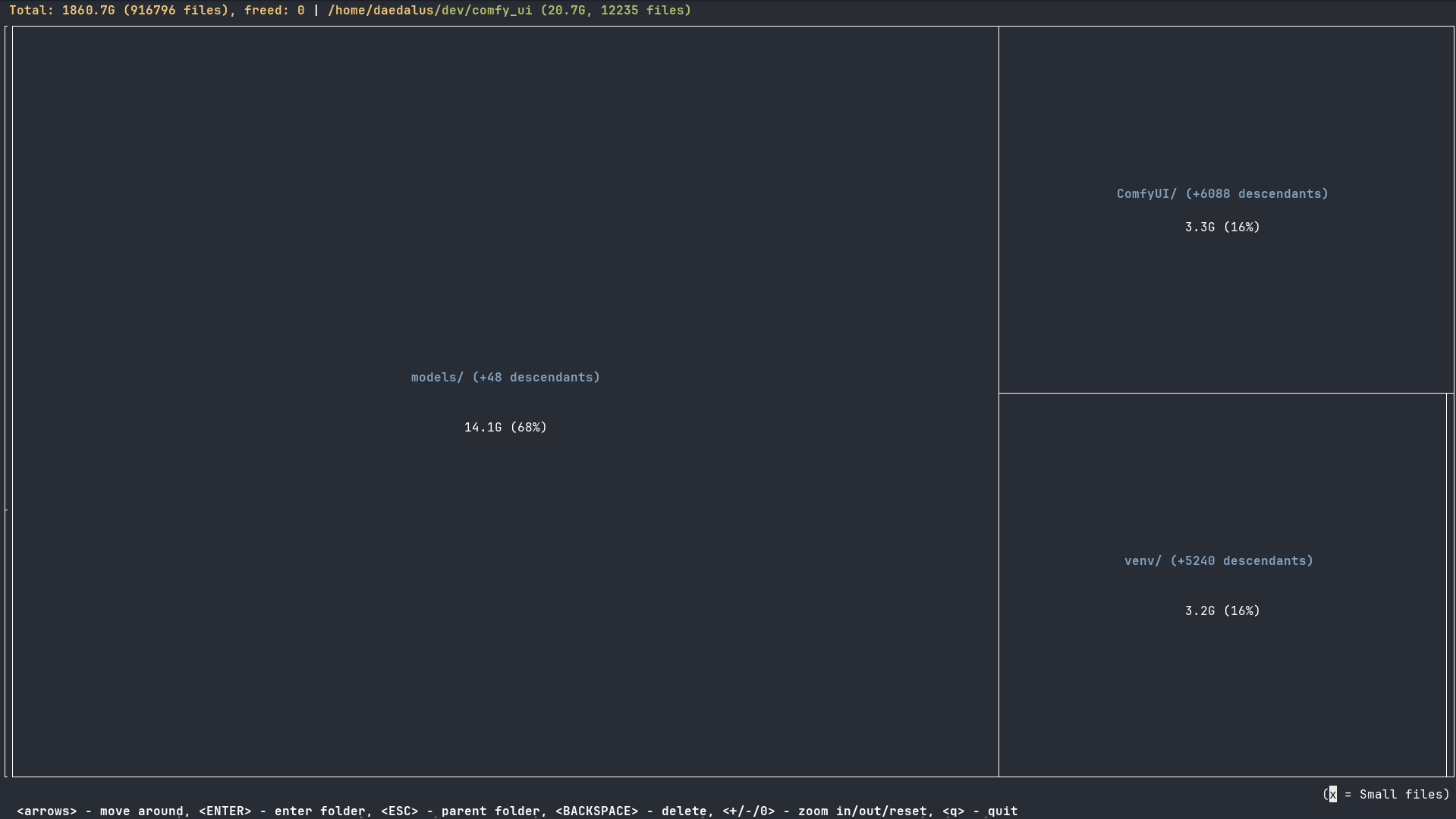
Deleting this directory is as easy as highlighting it and pressing BACKSPACE.
but we don’t actually want to do this, because we use ComfyUI with some frequency.
Instead, let’s descend into zed, a project directory for building the Zed editor from source. We’ve already built zed, so from our perspective zed-the-project-directory can indeed be made dead. Using the ARROW keys to select zed and pressing BACKSPACE surfaces a warning prompt:
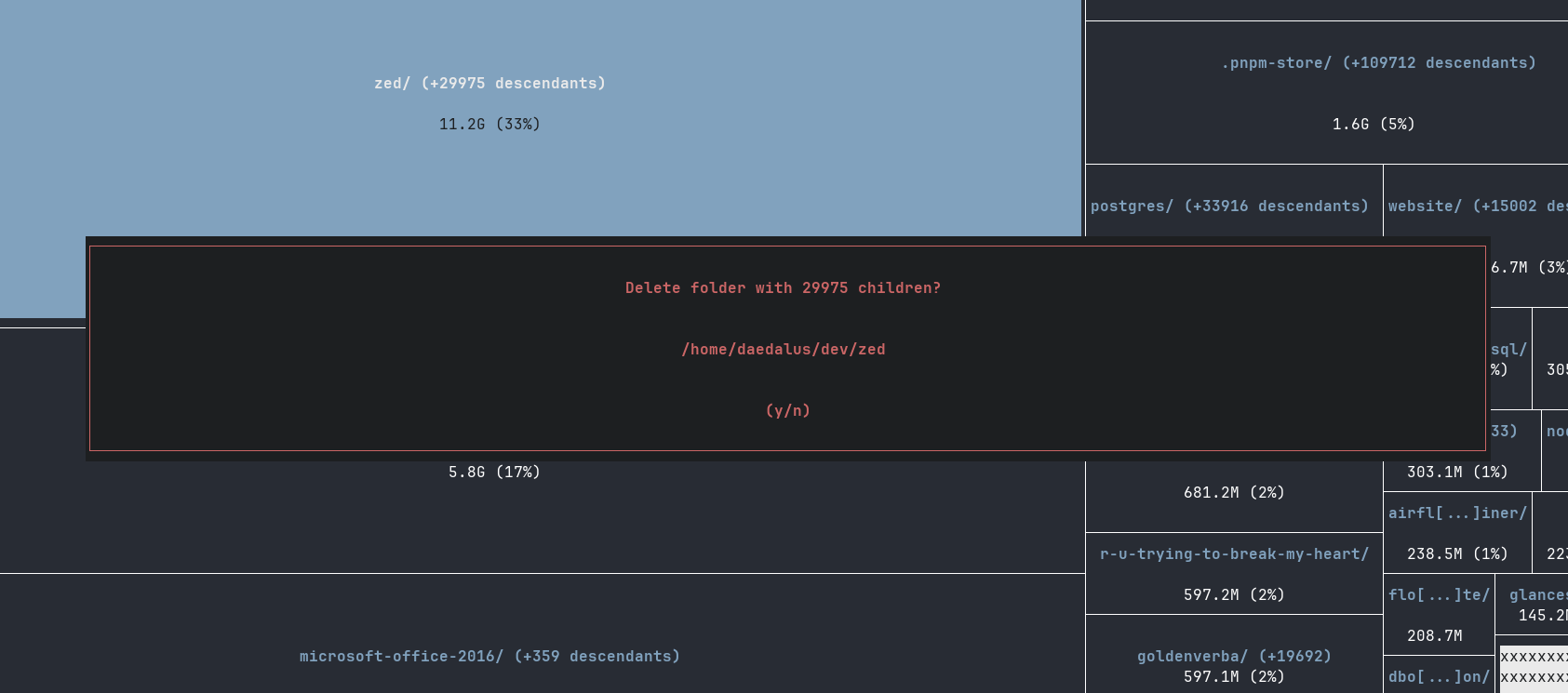
Approving the delete operation (by pressing y) does one other neat thing: diskonat logs the space that's freed up by deleting a file or folder in its “freed:” counter in the top-left of the TUI screen:
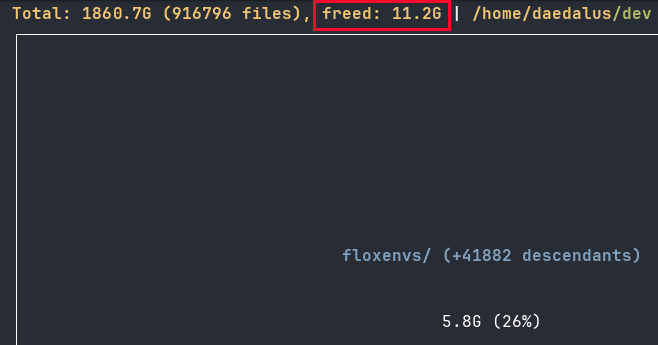
Alllll right. Just 32 GB more space to free up before you can download the 70-billion-parameter version of DeepSeek R1!
Summary
On this and on other occasions, diskonaut helped save the day. There are other tools that help you identify oversized files and folders, but diskonaut is probably the easiest and most efficacious.
Flox gives you access to over 150,000 packages—and millions of historical package/version combinations!—that, like diskonaut, can easily be flox install-ed from the command-line, or defined declaratively in the Flox environment manifest. From so simple a beginning, you can use Flox to create rich runtime environments with built-in services, secrets management, automations, aliases, functions, and other features.
Happy hacking!


